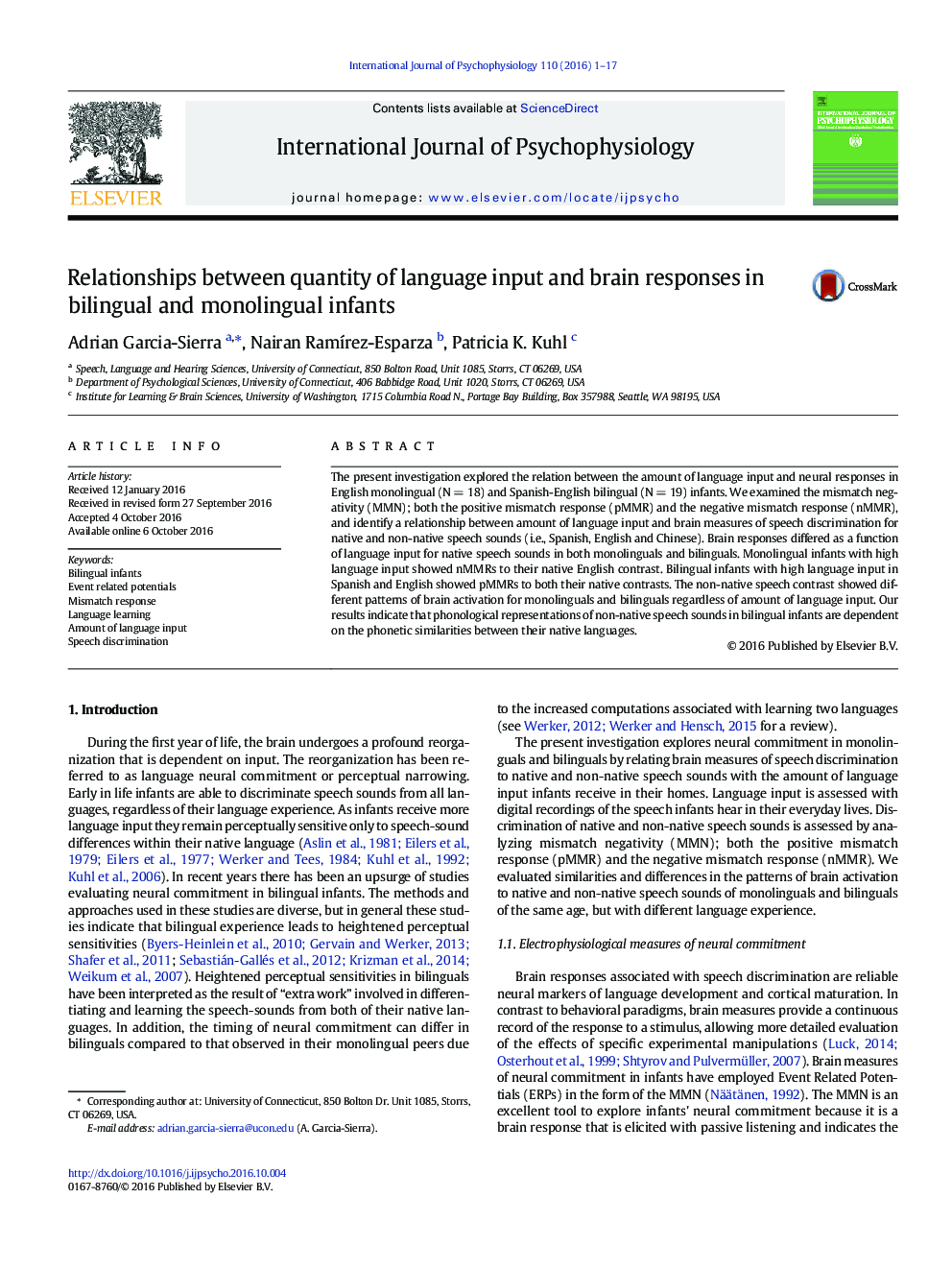| Article ID | Journal | Published Year | Pages | File Type |
|---|---|---|---|---|
| 5042378 | International Journal of Psychophysiology | 2016 | 17 Pages |
•Monolingual and bilingual infants’ MMRs differed as a function of amount of language-input received from their caregivers•Monolingual infants with high language-input showed negative-MMRs to the English contrast•Bilinguals with high language input to Spanish or English showed positive-MMRs to their native speech contrasts•Monolinguals with low language input showed positive-MMRs to the native speech contrast•The non-native speech contrast showed different patterns of brain activation for monolingual and bilinguals•MMRs to non-native speech sounds in bilingual infants depend on the phonetic similarities between their native languages
The present investigation explored the relation between the amount of language input and neural responses in English monolingual (N = 18) and Spanish-English bilingual (N = 19) infants. We examined the mismatch negativity (MMN); both the positive mismatch response (pMMR) and the negative mismatch response (nMMR), and identify a relationship between amount of language input and brain measures of speech discrimination for native and non-native speech sounds (i.e., Spanish, English and Chinese). Brain responses differed as a function of language input for native speech sounds in both monolinguals and bilinguals. Monolingual infants with high language input showed nMMRs to their native English contrast. Bilingual infants with high language input in Spanish and English showed pMMRs to both their native contrasts. The non-native speech contrast showed different patterns of brain activation for monolinguals and bilinguals regardless of amount of language input. Our results indicate that phonological representations of non-native speech sounds in bilingual infants are dependent on the phonetic similarities between their native languages.
